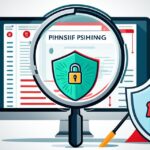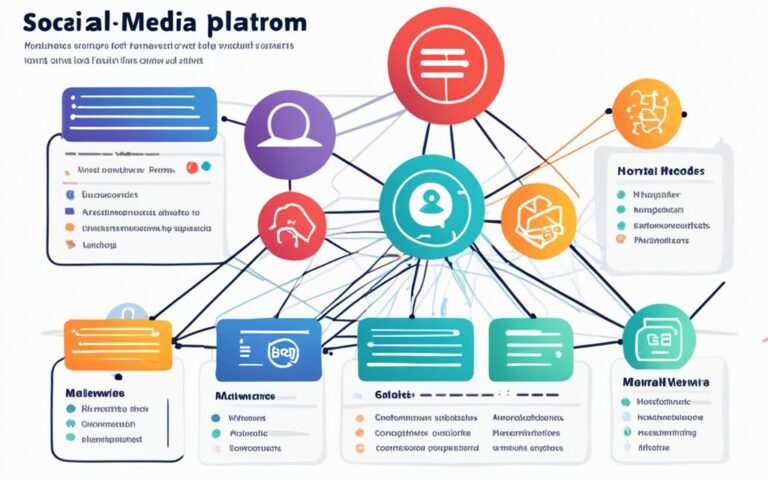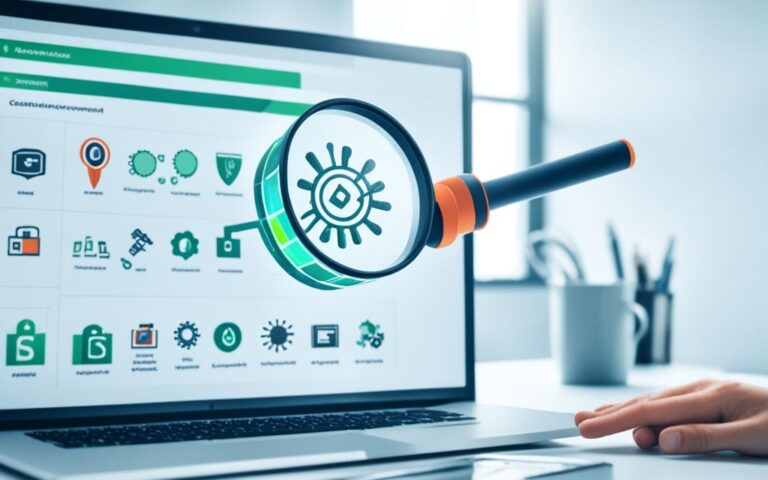Phishing Protection Cleanup for Email: Staying One Step Ahead
Phishing email tactics have evolved into sophisticated scams that can easily deceive even the most vigilant individuals. It is crucial to stay safe from these cyber threats by implementing effective email protection cleanup measures.
Protecting yourself from phishing scams requires a combination of awareness and caution. By following these steps, you can stay one step ahead:
- Verify the sender’s identity before opening any emails.
- Exercise caution when encountering emails that demand urgency or alarm.
- Hover over links to check their destination before clicking on them.
- Be skeptical of email attachments, especially from unknown sources.
- Trust your instincts if something feels suspicious or too good to be true.
By implementing these proactive measures, you can protect yourself and your sensitive information from falling into the hands of phishing scammers.
The Pioneering Ways HMRC is Combatting Phishing Attacks
In the ongoing battle against phishing attacks, Her Majesty’s Revenue and Customs (HMRC) has taken strategic steps to enhance cyber security and protect its customers. Collaborating with the National Cyber Security Centre and other government departments, HMRC has implemented innovative measures to stay one step ahead of cybercriminals.
One of the key initiatives taken by HMRC is the identification and request for removal of malicious HMRC-related websites. By promptly addressing these fraudulent sites, HMRC aims to prevent phishing attacks and safeguard its customers from falling victim to scams.
Additionally, HMRC has been proactive in removing phishing emails from circulation, minimizing their impact on unsuspecting individuals. This effort significantly contributes to the reduction of successful phishing attempts and strengthens cyber defenses.
To further bolster their security measures, HMRC has implemented techniques to redirect visits from misleading domains. This approach ensures that individuals are not inadvertently led to phishing sites impersonating HMRC, providing an additional layer of protection for customers.
Moreover, HMRC has introduced innovative pilot projects to protect their text messages and enhance their overall cyber security. These projects aim to secure HMRC-branded text messages, mitigating the risk of phishing attempts and fraudulent communication.
By adopting these pioneering methods, HMRC is actively working to combat phishing attacks and prioritize the protection of its customers. The implementation of these strategies underscores HMRC’s dedication to cyber security and serves as an example for other organizations in safeguarding against cyber threats.
Understanding and Recognizing Spam Email
Spam email, also known as unwanted commercial messages, refers to the unsolicited bulk emails sent to a large number of recipients. These emails can contain various types of content, including advertisements, fraudulent offers, financial thefts, scams, and links to phishing pages. To protect yourself from falling victim to spam, it is essential to develop the ability to recognize and identify suspicious emails.
Recognizing Spam Email
When it comes to identifying spam emails, there are several red flags that can help you determine their authenticity:
- Irrelevant advertisements: If you receive an email promoting products or services that are completely unrelated to your interests or needs, it is likely a spam message.
- Money scams: Emails promising large sums of money, lottery winnings, or other financial opportunities that seem too good to be true are often attempts to trick recipients.
- Malware warnings: Emails that claim your computer is infected with a virus or other forms of malware, and prompt you to click on a link or download an attachment, are common tactics used by spammers to gain unauthorized access to your system.
- Email spoofing: Spam emails may appear to come from reputable sources or organizations, but upon closer inspection, you may notice misspelled email addresses or suspicious domain names.
“Being able to recognize the signs of spam email is vital for protecting yourself from potential harm and maintaining cybersecurity.”
By familiarizing yourself with these indicators, you can avoid opening spam emails, clicking on malicious links, or providing personal information to fraudulent entities.
Reporting Spam Email
If you receive a spam email, it is important to report it to the appropriate authorities. Most email providers have mechanisms in place to assist users in reporting spam or phishing attempts. By reporting these messages, you help protect others from falling victim to similar scams and contribute to efforts in combating spam.
| Steps to Report Spam Email | Email Providers |
|---|---|
| Contact your email provider | Gmail, Outlook, Yahoo Mail |
| Forward the email as an attachment | Apple Mail, Thunderbird |
| Create a new email and include the full email headers | Hotmail, AOL |
Reporting spam emails not only helps protect yourself but also contributes to the collective effort in reducing the spread of spam and phishing attempts.
Why Emails Go to Spam and How to Prevent It
Email deliverability is essential for effective communication, but sometimes emails end up in the dreaded spam folder. Understanding the reasons behind this can help prevent your important messages from being overlooked or discarded. Several factors contribute to emails being marked as spam, including:
- Lack of email authentication
- Bad domain reputation
- Recipients marking emails as scams
- Inclusion of suspicious links and attachments
The Importance of Email Authentication
Authentication plays a crucial role in ensuring that your emails are recognized as legitimate by email service providers. By implementing authentication protocols such as SPF (Sender Policy Framework) and DKIM (DomainKeys Identified Mail), you can verify the authenticity of your emails. This not only establishes trust with recipients but also helps avoid potential spam filters.
Monitoring Domain Reputation
Your domain’s reputation can significantly impact email deliverability. ISPs (Internet Service Providers) may associate a domain with spam if it has a history of suspicious activity or sending unsolicited emails. Regularly monitoring your domain’s reputation and taking necessary steps to maintain a positive image can enhance email deliverability.
Avoiding Suspicious Links and Attachments
Suspicious links and attachments are often red flags for spam filters. By avoiding the inclusion of suspicious URLs and attachments in your emails, you can increase the chances of your messages being delivered to the recipients’ inboxes. Exercise caution and only include trusted links and attachments that are relevant and necessary for the email’s purpose.
Ensuring Double-Opt-In for Recipients
Double-opt-in is a process where recipients confirm their subscription by responding to a verification email. This not only ensures that recipients genuinely want to receive your emails but also prevents your messages from being marked as spam. Implementing double-opt-in can help maintain a clean and engaged email list.
| Emails in Spam | Prevention Methods |
|---|---|
| Lack of email authentication | Implement authentication protocols like SPF and DKIM |
| Bad domain reputation | Regularly monitor and maintain a positive domain reputation |
| Recipients marking emails as scams | Deliver valuable content and establish trust with recipients |
| Inclusion of suspicious links and attachments | Avoid including suspicious URLs and attachments |
By addressing these factors and implementing best practices, you can improve the deliverability of your emails and ensure that they reach the intended recipients’ inboxes. Stay proactive in maintaining a positive reputation and providing valuable content to establish trust with both recipients and email service providers.
Conclusion
To ensure successful email deliverability and avoid the spam folder, it is crucial for individuals and organizations to follow best practices. By implementing strategies such as double-opting customers, building and cleaning mailing lists, authenticating emails, monitoring domain reputation, and sending relevant content, one can significantly increase the direct delivery rate and improve email deliverability.
Double-opting customers is a vital step in obtaining explicit permission and ensuring that recipients are genuinely interested in receiving emails. Building and regularly cleaning mailing lists help maintain a high-quality subscriber base, minimizing the chances of emails being marked as spam.
Email authentication plays a pivotal role in establishing trust between senders and recipients. By implementing protocols such as SPF, DKIM, and DMARC, it becomes easier to verify the authenticity of emails, increasing their chances of bypassing spam filters.
Monitoring domain reputation is essential to maintaining a positive sender reputation. Regularly checking and addressing any issues that may affect domain reputation, such as spam complaints or blacklisting, helps ensure that emails are delivered directly to the inbox.
Lastly, sending relevant content is crucial in engaging recipients and preventing emails from being flagged as spam. By delivering valuable and personalized content, recipients are more likely to open, read, and interact with emails, ultimately improving email deliverability.












